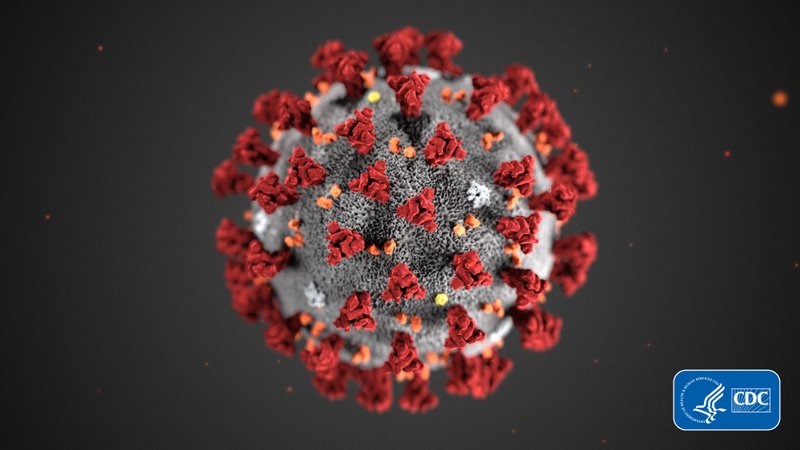EDITOR'S NOTE: As a service to our readers, The Sentinel-Record will publish updates released each weekday by the city of Hot Springs and the state of Arkansas.
The following stats were shared Monday at Gov. Asa Hutchinson's daily COVID-19 news conference in Little Rock and posted on the Arkansas Department of Health's website:
• 16,083 cumulative cases, up 522 from Sunday.
• 256,339 tests reported, up 8,159 from Sunday.
• 6.3% infection rate, no change from Sunday.
• 5,063 active cases, up 183 from Sunday.
• 10,793 recoveries, up 337 from Sunday.
• 237 hospitalizations, down seven from Sunday.
• 227 deaths, up two from Sunday.
• 180 cumulative cases in Garland County, up three from Sunday.
• 5,722 test results for Garland County, up 200 from Sunday.
• 3.1% rate of infection, down from 3.2% Sunday.
• 155 recoveries in Garland County, up four from Sunday.
• 24 active cases in Garland County, down one from Sunday.
• One death in Garland County, no change from Sunday.
The rolling seven-day average of new cases increased for a second-straight day, reaching 452.29 Monday. The moving average increased 2.7% over the weekend, but Monday's average was 2.2% lower than Wednesday's peak of 462.57.
Monday's 6.3% cumulative infection rate, or positive tests as a percent of the more than 250,000 tests reported, was 21.1% higher than the May 20 rate.
The 522 new cases reported Friday included 85 from neighboring Hot Spring County. Dr. Nate Smith, Health Department secretary, said the Ouachita River Unit of the Arkansas Department of Correction in Malvern accounted for almost all of the county's new infections, but the prison wasn't included in Monday's list of nursing home and congregate settings with positive cases.
"As of noon we had tested about 800," Smith said. "We still have many more to go. Results are just coming in. We'll know more as we go along. This is an evolving situation, but we're taking a very aggressive approach just as we have with other Department of Correction facilities."
Three new cases reported Monday in Garland County kept its rolling seven-day average of new cases at 2.14 for a second straight day. The county's testing has increased after a slow start to June. The Health Department reported 42.4 test reports per day during the first week, ramping up to 63.85 the second week and 68.14 for the week that concluded Sunday.
The 200 test reports the Health Department added to the county's total Monday were the most credited to it in a single day since May 5, raising per day testing in June to 73.
Healthy Connections is hosting a free drive-through testing event today from 9 a.m. to 1 p.m. at the Cordoba Center near the west gate of Hot Springs Village.
Hutchinson said the state has already met its goal of 120,000 tests in June.
"Clearly we're not backing off testing," he said in response to a question about the president telling supporters Saturday that he had directed officials to slow testing to reduce the number of reported cases. "We're accelerating our testing. We understand how important that is.
"We do recognize you're going to demonstrate more positive cases when you test more, but that's how you deal with the spread of the virus. I thought is was somewhat of a flippant comment. Everybody needs to understand how seriously we take this, and how we're going to continue to expand testing."
The number of COVID-19 patients in hospitals decreased by seven Monday, the largest single-day drop in more than two weeks. Information Hutchinson presented showed about 30% of the state's almost 9,000 hospital beds were unoccupied. More than 20% of its almost 1,000 intensive care beds were open, and about two-thirds of its roughly 900 ventilators were available.
Dr. Cam Patterson, chancellor for the University of Arkansas for Medical Sciences, said hospitals can safely absorb a surge in admissions, something they couldn't do when the state suspended elective surgeries earlier in the pandemic. He said hospitals have acquired more protective equipment since then and can better segregate COVID-19 patients from other patients.
"The reason won't be for safety issues," Patterson said of a subsequent suspension of elective procedures. "As long as we can maintain capacity, we don't have a safety need to stop doing elective procedures at some point."
The UAMS Fay W. Boozman College of Public Health's most recent predictive model projected more than 3,000 hospital beds would be needed by October for COVID-19 patients.
